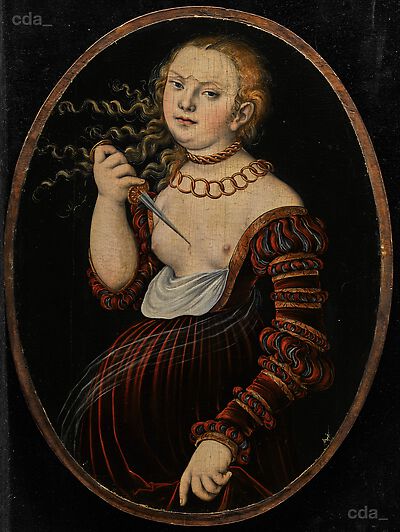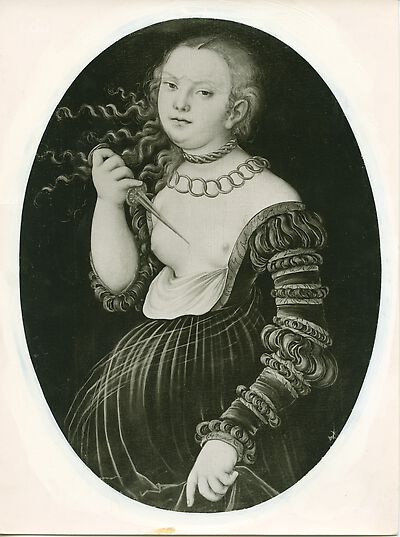The painting depicts Lucretia as a three-quarter length figure in contemporary dress. Lucretia is inclined slightly to the left, but her pained gaze is directed at the viewer. In her left hand she holds the material of her skirt, whereas in her right raised hand she holds the dagger. This
The painting depicts Lucretia as a three-quarter length figure in contemporary dress. Lucretia is inclined slightly to the left, but her pained gaze is directed at the viewer. In her left hand she holds the material of her skirt, whereas in her right raised hand she holds the dagger. This is pointed down towards the area between her breasts.
She wears a red dress with slits in the sleeves, and her chest is bare. In addition she wears a transparent veil over her head, which reappears under her left arm. Her loose, reddish-blond hair wafts in large curls to the left.
She wears a cord-like chain decorated with pearls and a linked chain as jewelry.
The background is dark.
According to the legend Lucretia lived in the 6th century BC and was the beautiful and virtuous wife of the roman Collatinus. The roman King's son - Sextus Tarquinius fell in love with her. During a stay in her house Sextus threatened to kill her and shame her honour if she did not surrender to him. After the rape Lucretia had her father and husband vow vengeance and then she stabbed herself. The event led to an uprising in which the royal family was overthrown and the Roman Empire became a Republic.
Depictions of Lucretia who was seen as the epitomy of female virtue, chastity, fidelity and honour enjoyed great popularity, particularly in the 16th century.
[Literature: Bierende 2002, Follak 2002, Livius 1909]


